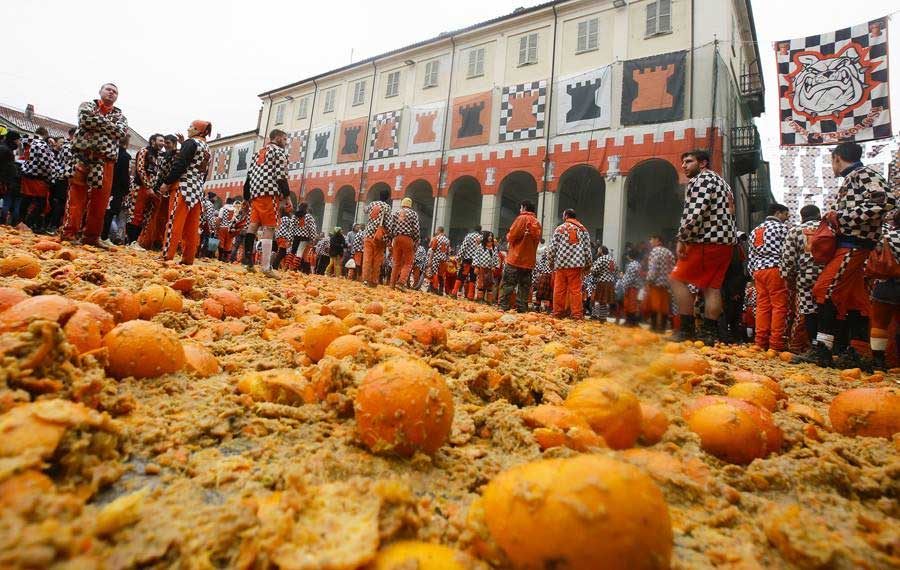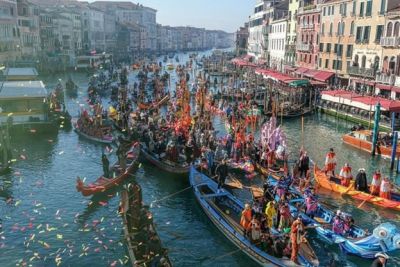Mardi Gras, or Carnevale as it is known in Italy, is one of the country’s most colorful and spirited traditions. Rooted in centuries of history, this festive season culminates in a lively explosion of parades, masks, music, and revelry, bringing communities together in a joyous prelude to Lent. Italian Carnival blends ancient customs, regional traditions, and modern creativity, making it an unforgettable experience for locals and visitors alike.
The origins of Italian Carnival date back to ancient Roman festivals like Saturnalia, where masks and feasting symbolized the temporary suspension of social norms. With the rise of Christianity, these celebrations evolved to mark the period before the somber season of Lent. The term Carnevale itself is derived from the Latin carnem levare, meaning “to remove meat,” reflecting the traditional practice of fasting and abstinence during Lent.
By the Renaissance, Carnival had become an elaborate affair, particularly in cities like Venice, Florence, and Rome. Aristocrats and commoners alike donned ornate masks and costumes, participating in lavish balls, theatrical performances, and processions. Over time, these traditions developed unique regional flavors, each with its own distinctive character.
Arguably the most famous Carnival in Italy, the Venice Carnival is a masterpiece of elegance and opulence. Known for its iconic masks and elaborate costumes, the celebration transforms the city into a living theater. The canals and piazzas come alive with masquerade balls, street performances, and boat parades. Traditional masks, such as the bauta, moretta, and volto, are central to the Venetian celebration, embodying mystery and intrigue.
The Venice Carnival also hosts world-renowned events like the Flight of the Angel, where a costumed performer descends gracefully from the Campanile tower to the cheering crowds in St. Mark’s Square. Culinary delights, including frittelle (fried doughnuts) and galani (crispy pastries), add a delicious touch to the festivities.
In Tuscany, the Carnival of Viareggio stands out for its spectacular parades featuring massive, satirical floats. These papier-mâché creations, often inspired by politics, culture, or current events, are a testament to Italian craftsmanship and humor. The parade route along the seafront provides a stunning backdrop, attracting thousands of spectators annually.
Viareggio’s Carnival is not only about the floats; it’s a month-long celebration with concerts, parties, and fireworks. The festive atmosphere reflects the community’s creative spirit and commitment to preserving its traditions.
In the northern town of Ivrea, Carnival takes on a uniquely combative twist with the famous Battle of the Oranges. This reenactment of a medieval revolt pits teams of orange throwers against one another in a symbolic fight for freedom. Participants in colorful costumes fill the streets, creating a chaotic yet exhilarating spectacle.

The Battle of the Oranges is steeped in historical significance, commemorating a rebellion against a tyrannical ruler. It’s a vivid example of how Carnival in Italy merges historical narratives with contemporary celebration.
Italian Carnival is as much about the food as it is about the festivities. From north to south, regional delicacies take center stage. Sweet treats like chiacchiere (crispy fried pastries dusted with powdered sugar), castagnole (small fried dough balls), and zeppole (cream-filled doughnuts) are staples of the season. Savory dishes, such as lasagna and pork-based specialties, also play a prominent role in pre-Lenten feasting.
Carnival in Italy is more than just a celebration; it is a reflection of the country’s rich cultural heritage and artistic flair. Whether you’re wandering through the romantic canals of Venice, marveling at the colossal floats in Viareggio, or dodging oranges in Ivrea, the spirit of Carnevale is infectious. It’s a time to embrace joy, creativity, and community, a reminder of the enduring power of tradition in bringing people together.
So, as the masks are donned and the music plays on March 4, 2025, join in the revelry of Italian Mardi Gras. It’s an experience that promises memories as vibrant and timeless as the celebration itself.



